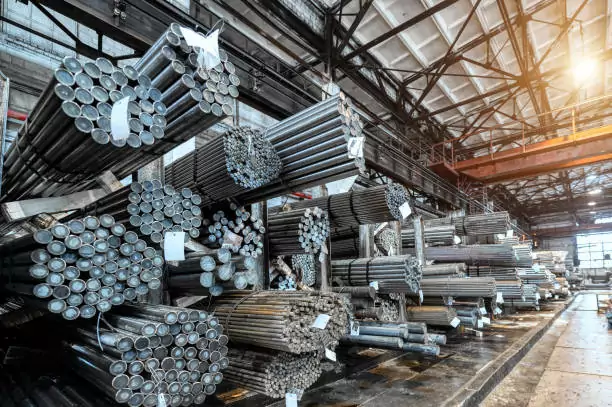CNC machining stainless steel involves using computer-controlled machines to create precise and intricate parts from this versatile alloy. Stainless steel is a common choice in various industries because of its strength, durability, and corrosion resistance, making it ideal for manufacturing high-quality components.
However, because of its hardness, CNC machining stainless steel may be more challenging than machining less tough metals like aluminum. This article explores the CNC machining process and its application to stainless steel. We also discussed the best stainless steel grades for CNC machining, providing essential insights for manufacturers and engineers.
What is CNC Machining?
CNC machining is a precise parts manufacturing process in which pre-programmed computer software dictates the movement of factory tools and machinery. It is a subtractive manufacturing process that uses computer programs to control the movement of cutting tools as they remove pieces of a material block until the intended size, shape, and structure are achieved.
Using computer codes and programs to control the process makes it automated. This feature makes it a precise and accurate method of fabricating parts and components. Using appropriate computer models, the machinist creates the parts’ design and includes critical machining parameters, such as toolpaths, cutting depth, and tolerance specifications.
CNC machining includes a series of manufacturing processes like turning, milling, routing, grinding, drilling, etc., suggesting that it is a vast technique. In fact, each of these processes has specific machines—lathes, mills, routers, grinders, and drills, respectively. However, CNC milling centers, particularly the sophisticated multi-axis machines, have vast applications, allowing them to perform various machining operations and reducing the need for multiple devices and machine setups.
This manufacturing process is widely used in industries requiring high precision and repeatability. It is already a mainstay in aerospace, automotive, medical devices, and electronics sectors due to its ability to produce complex and intricate parts with minimal human intervention.
How Does CNC Machining Work?
CNC machining utilizes computer-controlled machines to execute precise movements based on digital instructions. The process begins with creating a digital design – CAD (Computer-Aided Design) model of the part to be manufactured. This model is then converted into a set of instructions, known as G-code, which the CNC machine can interpret.
The CNC machine, equipped with various cutting tools, follows these instructions to perform multiple operations, such as cutting, drilling, milling, and turning. Depending on the device’s sophistication, these operations are executed along various axes, typically three to five. The more the number of axes the machine can operate simultaneously, the more suitable it is for fabricating complex and intricate shapes.
The CNC machining process device has servo motors and feedback systems that help control the machine’s movement and ensure high precision and repeatability. During machining, some sensors monitor various parameters, such as tool position, speed, and feed rate, to maintain accuracy. This automated approach minimizes human error, enhances production efficiency, and allows for the consistent creation of high-quality parts.
After the machining process – the intended part’s shape, dimension, and structure- is achieved, the machinist can subject the fabricated part to post-processing finishes. However, they may also be left as machined, as the process is precise enough, with less risk of defects, making the machined part ready for use.
Can stainless Steel be CNC Machined?
Yes, stainless steel can be CNC machined. Because of its suitable mechanical and chemical properties, stainless steel is one of the most used materials for parts manufacturing. The alloy possesses considerable strength and is durable and corrosion-resistant.
Unlike metals like aluminum, stainless steel is tough, making CNC machining more complex. Because of its hardness and challenging workability, CNC machining stainless steel requires specialized tools and techniques. However, various machining shops machine different grades of stainless steel.
Generally, martensitic stainless steel grades, such as 416, are the best fit for machining purposes. These alloys are renowned for their increased strength, stress, corrosion, and cracking resistance. Many may argue that austenitic grades are challenging for machining purposes; however, grades such as 303, 304, and 316 are some of the most used stainless steel variants for CNC machining purposes. Their good machining properties may be attributed to their excellent formability.
While stainless steel can be machined, proper tooling, coolant application, and optimized machining parameters are essential to achieving efficient and precise results when CNC machining stainless steel. By adhering to these practices, manufacturers can produce high-quality stainless steel components suitable for various applications.
What is the Best Stainless Steel for CNC Machining?
While martensitic stainless steel is better for CNC machining purposes, the best stainless steel for CNC machining depends on the application’s specific requirements. This section will explore several grades that stand out for their machinability and performance.
303 Stainless Steel
This grade is often considered the best for CNC machining due to its excellent machinability. It is an austenitic grade specifically designed for improved machining properties. This alloy has been modified by adding sulfur, which improves its cutting properties and chip breaking and reduces tool wear, making it ideal for producing complex and intricate parts at high speeds. Also, it exhibits good surface finishes after machining and good corrosion resistance, making it suitable for applications such as fasteners, gears, and valve components.
However, other grades are also notable for specific applications:
416 Stainless Steel
Like 303 stainless steel, the 416 variant is one of the easiest to machine. It is a martensitic grade known for its high machinability, thanks to added sulfur, which enhances its cutting properties. It provides good mechanical properties and can be hardened through heat treatment. This grade is ideal for CNC machining applications requiring precision and ease of cutting, such as in producing fasteners and gears.
304 Stainless Steel
While less machinable than 303, 304 stainless steel is the most commonly used stainless steel grade. This is because it offers a good balance of strength, corrosion resistance, and weldability. The alloy is suitable for a wide range of applications across different industries.
316 Stainless Steel
This stainless steel grade is known for superior corrosion resistance, especially in chloride environments. Therefore, 316 stainless steel is preferred for marine, chemical, and medical applications. It offers excellent strength and durability, though it is slightly more challenging to machine than 304.
430F Stainless Steel
430F is a ferritic stainless steel modified with added sulfur to improve machinability. It offers good corrosion resistance and is easy to machine, making it suitable for CNC machining. While not as strong as martensitic grades, 430F is often used in the manufacturing of screws, bolts, and other components where moderate corrosion resistance and ease of machining are required.
Conclusion
CNC machining stainless steel is crucial in modern manufacturing, offering precision and efficiency for creating high-quality components. However, machinists must select the appropriate stainless steel grade for optimal machining performance and end-use applications. By understanding the unique properties and machining requirements of different stainless steel grades, manufacturers can ensure the production of reliable, durable, and corrosion-resistant parts.



